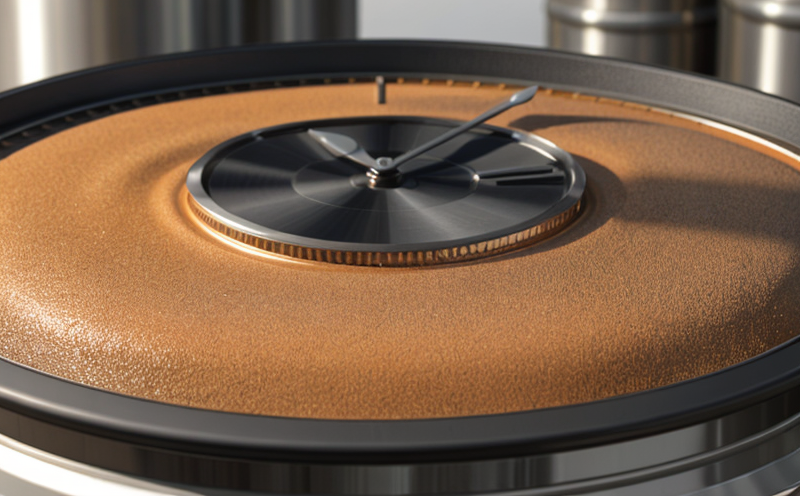Impact of curing time on viscosity
The Crucial Connection How Curing Time Impacts Viscosity in Your Product Development
As manufacturers and formulators, you understand the importance of precise control over the properties of your final product. One critical aspect that can make or break the success of your formulation is viscosity. But what if we told you theres a direct relationship between curing time and viscosity? Understanding this connection can be a game-changer for your business.
At Eurolab, our team of experts provides comprehensive laboratory services to help you overcome challenges in product development. One essential service we offer is analyzing the impact of curing time on viscosity. This article delves into the intricacies of this phenomenon, highlighting its significance and the benefits of incorporating it into your research pipeline.
What is Curing Time?
Curing time refers to the duration required for a material or coating to reach its desired properties after application. Its an essential aspect of various industries, including paints, coatings, adhesives, and pharmaceuticals. The curing process involves chemical reactions that transform the material into its final form.
Why is Curing Time Impact on Viscosity Important?
Understanding how curing time affects viscosity can have a profound impact on your products performance, stability, and overall quality. Here are some compelling reasons why this knowledge is crucial for businesses
Improved Formulation By recognizing the influence of curing time on viscosity, you can adjust your formulation to achieve optimal properties. This leads to better product consistency, enhanced customer satisfaction, and reduced returns.
Reduced Production Costs When you grasp how curing time affects viscosity, you can optimize your manufacturing process, minimizing waste and energy consumption. This results in significant cost savings and a more environmentally friendly production line.
Enhanced Product Performance Viscosity is a critical property that influences product behavior under various conditions (e.g., temperature, pressure). By understanding the impact of curing time on viscosity, you can create products with improved durability, stability, and shelf life.
Increased Compliance Many industries have regulations governing product performance. By analyzing the effect of curing time on viscosity, you can ensure your products meet or exceed these standards, reducing the risk of costly non-compliance issues.
How Does Curing Time Impact Viscosity?
Viscosity is a measure of a fluids resistance to flow. It changes in response to various factors, including temperature, shear rate, and curing time. When a material cures, its molecular structure transforms, affecting its viscosity.
Initial Viscosity Freshly applied materials typically have higher viscosities due to their more open, unfilled structures.
Short-term Curing Time As the material begins to cure, its viscosity increases as molecules start bonding and cross-linking.
Long-term Curing Time After extended curing periods, viscosity often decreases as the materials structure becomes more rigid and less fluid.
Eurolabs Expertise in Analyzing Curing Time Impact on Viscosity
Our team of experienced scientists at Eurolab has extensive knowledge of material science and analytical techniques. We provide comprehensive laboratory services to help you understand the intricate relationships between curing time, viscosity, and other critical properties.
Tailored Solutions Our experts work closely with clients to design custom analysis plans tailored to their specific needs.
State-of-the-Art Equipment We utilize cutting-edge equipment and methods (e.g., rheology, thermal analysis) to accurately determine the impact of curing time on viscosity.
Thorough Reporting Our comprehensive reports provide actionable insights and recommendations for improving product development.
Frequently Asked Questions
Q What is the significance of understanding curing times effect on viscosity?
A Recognizing this relationship enables you to optimize your formulation, reduce production costs, enhance product performance, and ensure compliance with regulations.
Q Can Eurolab analyze curing time impact on viscosity for my specific industry or application?
A Yes, our team has experience working with various industries (e.g., coatings, adhesives, pharmaceuticals) and applications. Well design a custom analysis plan to meet your needs.
Q What are the benefits of outsourcing curing time impact on viscosity analysis to Eurolab?
A Our expertise ensures accurate results, reducing the risk of errors or misinterpretation. Additionally, we provide valuable insights and recommendations for improving product development.
Conclusion
The connection between curing time and viscosity is a vital aspect of product development that can significantly impact your businesss success. By understanding how these two properties interrelate, youll be better equipped to create high-quality products with improved performance, consistency, and shelf life. At Eurolab, our team of experts is dedicated to providing top-notch laboratory services to help you unlock the full potential of your formulations.
Dont let viscosity be a mystery in your product development process. Contact us today to learn more about how Eurolabs expertise can support your business goals.




